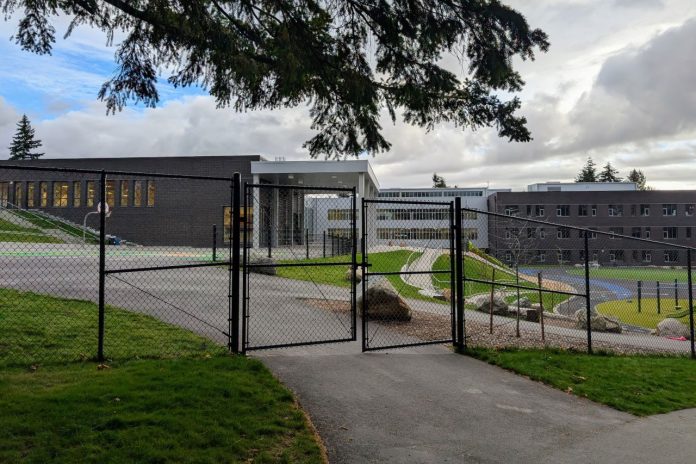
When asked why he robbed banks, Willie Sutton said, “Because that’s where the money is.” Our friends overseeing the Seattle School District seem to have forgotten this truism, and are instead contorting themselves into somersaults trying to figure out how many schools to close and which ones. Their latest plan is to close four schools in order to save $5 million — an improvement from earlier plans to close 20 schools, though the school board still appears intent on pursuing those broader closures at a later date.
How this will impact the kids, their parents, the pre-kindergarten programs, staff assignments, child care, and student assignments, the district isn’t telling. But we do know one thing: Enrollment actually increased this year by about 200 students, for an overall enrollment of 51,205.
Do we continue down this road to close schools and encourage affluent parents to send their kids to private school, replicating segregation academies of the South, this time based on income (and parenthetically race)? Or do we find the $5 million to keep the schools open? The answer is embedded firmly in Downtown Seattle. That’s where the Alliance for Education is housed.
The Alliance is a local education fund affiliated with the Seattle Chamber of Commerce. The Alliance works in partnership with Seattle Public Schools to address big challenges facing students, families and educators.
I can’t think of a bigger challenge than keeping schools open.
So let’s look at who supports the Alliance. The sponsors for the Alliance’s annual fundraising dinner are Amazon, Alaska Airlines, Boeing, Microsoft, The Seattle Times and Nordstrom. But they don’t actually contribute much for this status. In 2023, Microsoft gave between $50,000 and $99,999 to the Alliance, Amazon gave over $250,000, Nordstrom gave between $25,500 and $49,999, and Alaska Airlines, The Seattle Times, and Boeing all gave between $5,000 and $24,999, according to Alliance disclosures.
The straightforward approach would be for the school district to simply ask each of these entities for $1 million each, with no strings attached. They may not be banks, but they sure have the money.
- Amazon’s profit in 2023 exceeded $30 billion.
- Alaska’s net income in 2023 was $583 million, while its cash flow was $1.1 billion and its margin of 7.5% was among the highest in the airline industry.
- Boeing, while hemorrhaging billions with bad business decisions, just realized a $21 billion share sale.
- Microsoft made $22 billion in net income in fiscal year 2024, an increase of 11%.
- The Nordstrom family has so much money that they are offering $3.8 billion to buy back their company from shareholders.
- The Seattle Times, controlled for four generations by the Blethen family, has been exempted completely from the business and occupation tax almost all other businesses pay. They show their compassion by organizing the Fund for Those in Need, to which readers (not The Times) donated $2.9 million during last year’s holiday season.
What’s odd is that Microsoft and Amazon in particular like to posture themselves as champions for education. They did this in 2019, when they lobbied for a small business and occupation (B&O) surtax to fund workforce education in our state. But the funny thing is that the final law excluded Microsoft, Amazon, and other global $25 billion businesses from paying the tax on their revenues generated in Washington state. Instead, their payments are limited to $9 million a year.
Thanks to this little amendment, the workforce education fund loses about $100 million a year to these global corporations while they crow about how important public education is.
If public education is so important, then the Seattle School District just needs to send these companies a bill for $1 million each; they benefit from the public schools. Thousands of graduates from Seattle Public Schools have gone to work for Microsoft, The Seattle Times, Amazon, and Boeing.
All Together for Seattle Schools, the grassroots parent-led coalition standing up for students and against school closures, could deliver the bills and wait while the CEOs sign the checks. Peanuts for these behemoths would enable the lifeblood for the public schools. But only for a year.
We can band-aid ourselves out of this problem for this year with these requests. But that won’t help next year, and that doesn’t help other school districts left short-funded by the state.
What we need is a new funding source. And since the initiative to repeal the capital gains tax – I-2119 – was handily rejected by Washington voters, it’s time to move forward to put into law a 1% tax on intangible wealth exceeding $250 million, as proposed by State Senator Noel Frame (D-Seattle), with 18 Democratic co-sponsors.
While 1% may not sound like much, with 700 Washington residents making more than $250 million each, it would generate about $3 billion a year. With that funding, our public schools wouldn’t just be able to stay open: they’d thrive.

John Burbank (Guest Contributor)
John Burbank founded the Seattle-based Economic Opportunity Institute in 1998 and led it until his retirement in 2021.
